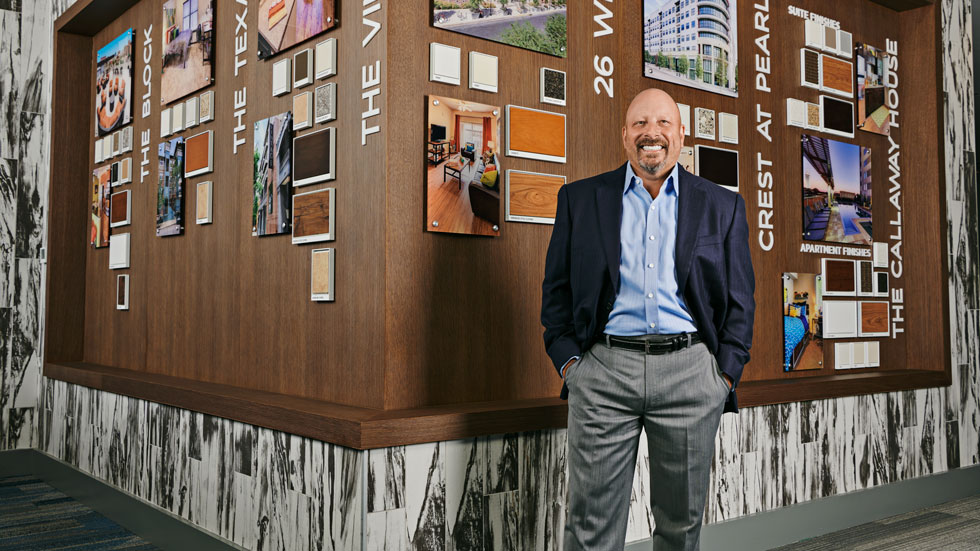American Campus Communities strives to provide a modern, healthy housing environment where students can succeed—especially when a pandemic upends traditional college life.
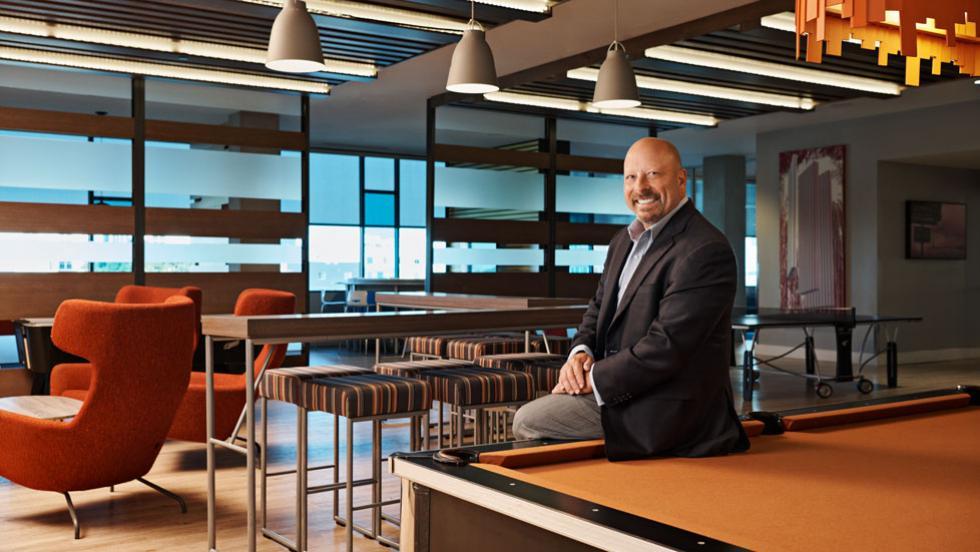
American Campus Communities CEO Bill Bayless
Remote instruction and other changes to traditional student life due to COVID-19 have made the college experience vastly different this year. While conditions on the nation’s campuses remain unsettled, student housing REIT American Campus Communities, Inc. (NYSE: ACC) believes the current environment underscores the soundness of its business model—providing high quality, modern, healthy housing options that help students succeed.
As of Sept.11, the REIT’s student housing portfolio was about 90% occupied, down from 97% a year ago. Even so, average rents have edged up slightly and American Campus Communities CEO Bill Bayless is optimistic for the spring and the next academic year.
“Because of the flexibility of universities going back and forth and toggling between online and in-person learning ...students are making the decision on a continual basis to come back with their peers,” he says.
Parents, students, and educators have realized that “when you’re trying to get students to have the college experience, doing it [completely] remotely just doesn’t work,” says Alexander Goldfarb, managing director and senior research analyst with Piper Sandler. “You just don’t form the connections, you don’t form the bonds, and kids are kids—they want to be together.”
In many ways, American Campus Communities has helped revolutionize the student housing model since its inception in 1993. Today, the company provides accommodation at 68 universities, including Virginia Commonwealth University, the University of Colorado at Boulder, California State University, Drexel University, and Purdue University.
Customer Treatment
Back in 1985, Bayless was a resident assistant at West Virginia University’s Summit Hall. Living in the nondescript tower while studying business administration and working odd jobs, the son of steel workers wondered: What if the students and parents were treated more like a customer instead of a temporary tenant?
That simple question led to the creation of American Campus Communities, an Austin-based REIT that has been a driving force in transforming the once fragmented sector and become a development and operations powerhouse respected by analysts and investors.
By eschewing wooden bunk beds and communal showers in favor of more desirable private rooms with their own bathrooms, American Campus Communities has improved the day-to-day lives of students—and helped alleviate the financial and management burden of providing housing for colleges and universities. Today, the REIT sector’s lone student housing player boasts a market cap of approximately $5 billion.
“What Bill and the company have done over the years was take what started as a very niche property type that didn’t have a large audience and…create a very large sector-leading business that has also gained a lot of mainstream acceptance in the institutional investing community,” says Anthony Paolone, senior analyst and co-head of U.S. real estate stock research with JP Morgan.
Nina Pierorazio Jones, portfolio manager for the U.S. Real Estate and Global Real Estate strategies at T. Rowe Price, says American Campus Communities is the industry leader in providing quality housing to college students.
“We believe American Campus Communities is an attractive investment despite near-term challenges caused by the global pandemic, as we expect that student demand for housing on or near university campuses will remain strong in the long term,” Jones says.
Disney and Greek Life
For generations, universities ran their own dorms while mom-and-pop operations turned older homes and apartments near campus into a cottage student housing industry lacking standards. These days, many students live in modern facilities on or near campus with strong internet connections, health-centered amenities, kitchens, and engaged employees on site who help ensure academic success.
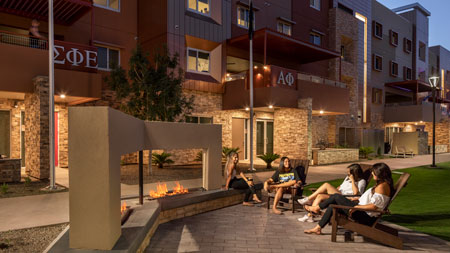 “When I was in college in the 1980s and certainly continuing into the 1990s, you had a lot of absentee landlords off campus and a lot of low-density declining neighborhoods around college campuses,” Bayless say. “Students really didn’t have high quality products to enhance their pursuit of higher education.”
“When I was in college in the 1980s and certainly continuing into the 1990s, you had a lot of absentee landlords off campus and a lot of low-density declining neighborhoods around college campuses,” Bayless say. “Students really didn’t have high quality products to enhance their pursuit of higher education.”
That is no longer the case. American Campus Communities has reinvented student housing—from the design to individual leases that include utilities and the all-important internet—giving parents and guardians peace of mind and taking pressure off cash-strapped universities looking to cater to modern students without tapping endowments or seeking taxpayer funds.
Some of its product caters to college freshmen, who frequently need extra handholding while adjusting to life away from home. It has also announced innovative concepts including housing for Disney College Program participants in Orlando and the Greek Leadership Village at Arizona State University, a student-led project that will provide the fraternity and sorority community with meeting spaces, council offices, retail space, and housing facilities.
Cydney Donnell, an American Campus Communities board member since 2004 and associate head of the finance department of Texas A&M University’s Mays Business School, notes that “despite continued investor education efforts on our part, there are still a lot of myths surrounding student housing as an investment class.”
“American Campus Communities has visionary leadership that serves a unique market niche,” Donnell says. “I see first-hand the needs of colleges and universities and how American Campus Communities supports their missions.”
Pandemic Response
The once-revolutionary concept of giving students more space helped ensure that the company made the grade as COVID-19 pushed students to replace the classic college experience with social distancing measures.
“I don’t think any of us in our lifetimes had ever contemplated or thought about responding to a pandemic as quickly as it came upon us.” Bayless says. “It really created a great sense of urgency.”
The company spent the summer analyzing high-traffic touch points and adding features including touchless soap dispensers and disinfectant wipe stations. Rooms were disinfected and marked with a “Clean and Confident” seal, and each student signed a personal responsibility acknowledgement for resident code of conduct, according to Bayless.
“They’re handling [COVID-19] exceedingly well,” Goldfarb says. Their facilities “don’t have a lot of personal overlap of space. That’s huge. The suites tend to have individual bedrooms or two bedrooms sharing a bathroom. That’s clearly far more COVID-compliant than having two or three people living in one room and then walking down the hall to the communal bathrooms.”
$3,000 and a Dream
At the University of Texas at Austin, junior Tristan Rogers is a community assistant who currently lives in a one-bedroom, one-bath unit at The Block. The eight-building facility offers six Academic Success Centers.
“It fit my budget and I really felt I could make it my home away from home and be successful,” says Rogers, who is pursuing a bachelor of science in advertising with a certificate in German, while also working as a social media marketing intern. “It’s super convenient to be able to run back for lunch or between meetings.”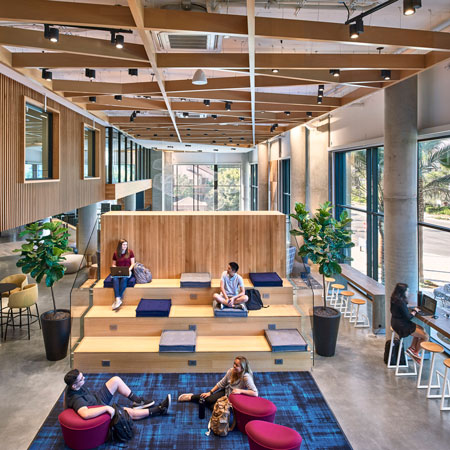
This is the exact scenario Bayless had in mind back in 1993, when he and his young family moved to Austin and, with less than $3,000, co-founded what was then American Campus Lifestyles Cos. The first management contract was with Dobie Center next to UT-Austin. Bayless spent two years traveling the country pitching universities his vision of modernized housing.
Prairie View A&M University in Prairie View, Texas, was the first to buy in and, in 1996, the University Village debuted with 100% occupancy and a 400-student waitlist. The company spent the next two decades privatizing the school’s housing, which was almost unheard of in higher education at the time.
The company renamed as American Campus Communities and went public with Bayless at the helm in 2004. The next year, it pioneered the American Campus Equity program, which allowed schools to use its equity for on-campus development, with the REIT also handling the financial, development and operations aspects.
The model was a lifeline for schools struggling to reinvent space for a generation of students not into sharing, particularly bathrooms. “The ability to convince a university to give control of their real estate to a private company says a lot about their trust and comfort with that organization,” Paolone says. “That’s been a big change over the years.”
And, there’s plenty of supply remaining to be modernized nationwide. We “believe that American Campus Communities is well positioned to benefit from opportunities to upgrade the student housing stock at universities over the next few years,” says Jones with T. Rowe Price.
Broad Appeal
American Campus Communities has always focused on acquiring and building properties on or close to campus and the majority of its portfolio is currently 0.1 miles from campus.
It has also worked to overcome the party image that plagued the industry as other developers raced to compete based on amenities such as tanning beds, shallow pools and, perhaps the most notorious, lazy rivers.
“There’s been a real shift in the amenity packages in the student housing facilities that we’re building today, whether we’re on or off campus,” Bayless says. “All the communities that we develop now have academic success centers that are much larger versions of what used to be the computer lab that we put in 10 years ago.”
Also big are wellness centers and space for studying. “It’s not just parents sending their kids off to the fun house,” Paolone says.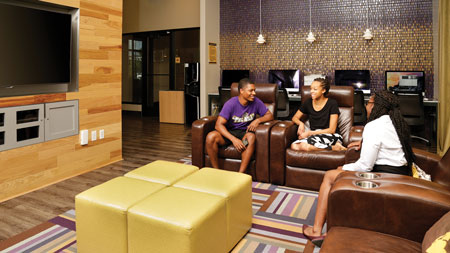
American Campus Communities has also worked to make sure that students from many backgrounds can afford its product. More than 60% of units are below the market median rent level, according to the company.
In an approach that the company refers to as ‘build for the masses not the classes,’ there are a variety of floor plans within a community. “Regardless of your socio-economic background, every student has a price point that they can afford and they all get to share the same great amenities, so you don’t have the haves and have-nots,” Bayless says.
“Their average product appeals to a wide swath of students. That’s critical,” Goldfarb points out.
For Bayless, the college experience is meant to be “where we all become immersed and exposed to diversity and differences of opinions in people that aren’t like us so that we can all grow and expand.” American Campus Communities is doing its part to help achieve that.
